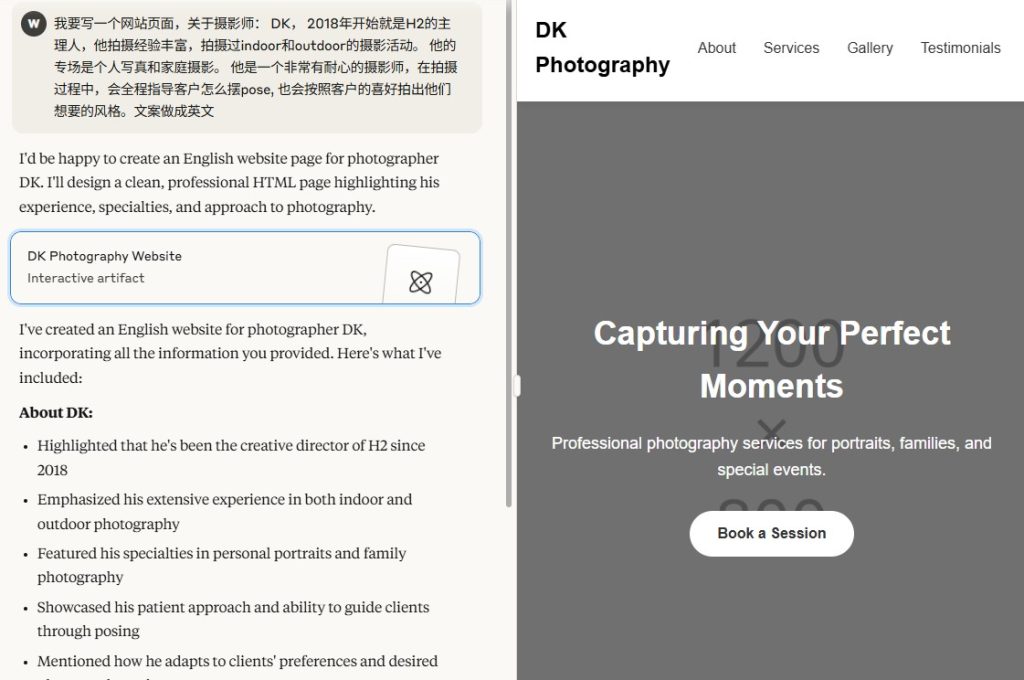Running a small online business in Singapore is a daunting job, the cutthroat competition makes it even harder to get business queries and sales. In such scenarios, SEO Singapore can help your small business grow like a skyscraper. SEO can help your business to get higher Google ranks which then helps to get more traffic and sales. Also, Search Engine Optimization helps to increase brand visibility for a small Singaporean business which is very important to gain customers.
But brand visibility, traffic, and higher ranks are not the only things that will help your small business grow. There are many small and big key factors that formulate the whole SEO plan for a small business website.
In this beginner’s guide for small businesses, you will learn how you can grow your website’s traffic, sales, and trust for your brand among users.
But let’s first understand what SEO is in a nutshell.
SEO – In a Nutshell
In simple words, SEO is a procedure to increase your website’s online visibility & ranks by using different methods.
SEO is divided into two parts, the first one is on-page SEO and the second one is off-page SEO. On-page SEO deals with all the things that you can do on your site to boost the rankings. Off page SEO deals with the things you can do outside of your website to improve the ranks.
Now to implement SEO, the first thing you need is a website, not just a website, an SEO friendly website. What is an SEO friendly website? Let’s check.
SEO friendly website to grow your business
So, you already have a website through which you are running your business. Great, But the question is: Is it SEO friendly? This is a big question every small business in Singapore needs to ask them.
There are millions of business websites out there trying to compete with each other locally and internationally. Do you think having a mere website is enough to compete with all these businesses? Definitely not.
Your website should be attractive and SEO friendly to stand out in the competition. Your website needs to have all SEO characteristics, only then your website will rank higher on Google and generate sales.
So far, you have seen the importance of making an SEO friendly website. Now check how you can make your business website SEO friendly to grow your business.
Make a website SEO friendly
There are hundreds of factors that make a website SEO friendly. Some of those are easy to implement some are hard. Many of these factors are advanced and require technical expertise; I would suggest you get in touch with an SEO expert in Singapore for those SEO implementations.
Since it is a beginner’s guide, I am not mentioning all the advanced SEO factors to make a website SEO friendly. Instead, I will tell all the fundamental but important SEO friendliness factors that will help your website.
-
Make your site responsive
As you may be aware, a responsive site is a website that works on all devices like mobile, tablet, laptops, desktops etc. Small businesses should pay attention to having a responsive website. If you don’t have a responsive website then getting tons of traffic is useless. Why? Because only one type of user (most likely laptop/desktop) will be able to see your website perfectly, rest all would see your website like they are looking at a puzzle.
This will make users leave your website immediately. That is why it is important to make the website responsive. If you already have a responsive website fine if not then hire a web developer in Singapore and get one.
-
Decrease page load time
If you have a responsive website that takes ages to load then you are missing out most of your customers. Nobody these days likes to waste time on the internet, people want to get their things done as quickly as possible. Hence, you should decrease the page load time, in other words, make your site load faster. How can you do it? Follow these points:
- Remove flash media items from your website
- Compress images
- Host your website on a power hosting server (cloud-based, if possible)
- Compress script files and CSS
Above are just a few points that you can follow to make your website load fast. For more information, you can follow our detailed article on website loading speed. This article will show you the step by step procedure to decrease the website loading time.
-
Remove unnecessary pages
To follow this step you need to first know “what are unnecessary pages”. These are the pages that add no value to your website such as tag pages, in some cases category pages etc.
These pages don’t serve any information to the users, they just take up space on your hosting server. Even though the space they consume is not much you should get rid of them.
Now that you know what unnecessary pages are, you need to decide which pages are unnecessary on your website. For that, you have to evaluate each page carefully and then select the ones that are less valuable.
Now you have to check whether the page you selected as less valuable is bringing traffic to your website in any manner. If it is, then don’t delete the page, keep it. Removing it will cause a traffic decrease and you definitely don’t want that.
-
Make site architecture clean
Another important thing to make your website SEO friendly is to check the website architecture. It is very important to keep the website architecture clean and easy. How can you do that? It’s easy, you have to think like a customer and check your website.
You can navigate through your website and check how much it is taking to reach a particular page. You can also evaluate the efforts it is taking to find the information.
Ideally, a user should land on the desired page within 3 clicks on your website. If it takes more than three clicks then you might lose the user’s attention and he will leave your website.
Other than that, you need to make sure that web pages are placed category wise in the navigation bar. If all the pages are mixed up then users will not find the right page or they will have to put extra efforts doing that. Nobody likes it.
-
Pay attention to UI & UX
Another necessary thing to make a website friendly according to the SEO rules is to take UI and UX into account. UI is the user interface of your website that includes colours, navigation bars, footers, buttons and many other things.
You need to see which UI elements are good and which are not. When you find out the UI elements are not valuable or increasing the page load time then you should remove those elements.
You also need to place UI elements on your website smartly to improve the UX (user experience). For example, search bars on websites are always on the top, if you place it in the middle or bottom of the page then users will not find it. Why, because users are looking for it at the top. The search bar is just one example, there hundreds of other UI elements that you need to place smartly to help users interact with the website easily.
-
Get HTTPS
HTTPS (Hyper Text Transfer Protocol Secure) is the secured version of HTTP which is mandatory to implement on the websites. This protocol secures the communication between users and the website. It makes sure that any confidential information like credit card information; personal details are not leaked to malware.
Last year, Google made it clear that it will give ranking preference to those websites that have implemented HTTPS. To implement HTTPS protocol you need to buy an SSL certificate, you can buy it from an SSL vendor or from a hosting company.
Getting HTTPS will signal Google and your users that your website is authentic and whatever data they enter on your website is safe. This will increase the authority for your brand and customer will trust your business.
-
Add relevant content
Content is the core part of a website these days. Since there is no person to person interaction when someone arrives at your website, content is the only way left to communicate with the users. Hence, including relevant content such as product description, images, product reviews, customer testimonials and case studies is very important. All these things increase your website’s Google rank as well as trust among users.
Relevant content helps users to understand your product well if you don’t explain your products well then who is going to buy it. Also, by placing informative content you help users to make buying decisions. This whole procedure builds trust for your brand and you start getting repeated customers.
-
Define Keywords
Every business has a goal to achieve; similarly, every website has keywords that are considered like goals. Every small business owner in Singapore should think of keywords that his website should rank for.
Here, you need to understand that the sole purpose of selecting the keyword is not just to rank for them. Choosing the keywords actually gives you an idea about your SEO goals. With the right keywords in mind, you can formulate a better SEO plan.
So, defining keywords is important after the research. After this, you have to smartly include the keywords into your content throughout the website. But you should never stuff the keywords into your content. Google hates this and your website might never get good ranks.
To define the keywords, you can use different keyword research tools like Keyword Planner, Keyword.io etc. These tools can show you metrics like relevant terms, search volume, competitiveness. Based on these metrics you can choose the right keywords for your website.
-
Add Visuals
Visual content is even more important in today’s world. People usually skim the content, they don’t read it. Also, visuals stay on people’s mind for a longer time than text-based content. In such cases, it becomes very important to add attractive and informative visuals to your website.
For that, you can find relevant images on royalty free image websites and incorporate them into your content. If you can spare some time then you can learn to edit images with online image editing tools as well. With these editing tools, you can edit the images according to your needs and add edited images into your content.
Apart from images, you can also add relevant videos that go by with your content. By spending some money you can create explainer videos for your business services. It will be a good add on for users as they can get clear ideas of your services within minutes.
You can also include info-graphics, short image guides to help users engage with your website. When you add images and info-graphics, make sure to put the alt tag with text that explains the image. Doing this will help Google understand your images in a better way.
-
Work on Meta Descriptions and Title
Meta description and title are short snippets that you see on the Google search result page along with the website URL.
This snippet is a short summary of a web page that gives an idea about your page to the users. Seeing this summary, a user can decide whether to click on the result or not. Hence, it becomes very important to write smart and precise Meta descriptions and titles.
You should also smartly include the focus keyword of the web page into Meta title. Apart from this, you should include a closer variation of the focus keyword into Meta description. The inclusion of focus keyword and relevant variation will help Google and users to understand your page content better.
Final Word
SEO is a hard job for small businesses, but if you do it precisely in the right way then you can achieve great results.








